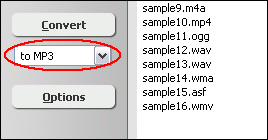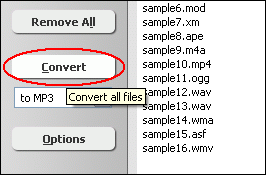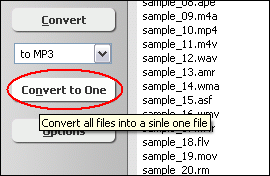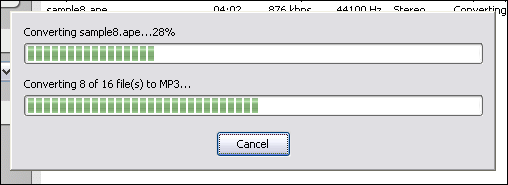H261 to MP3Convert H261 to MP3 in Batch, H261 to MP3 Converter |
 |
| Home | Getting Started | Download | Buy Now! | Screen Shots | FAQ | Support | Contact |
Total Audio MP3 Converter converts H261 to MP3. The software is an ALL-IN-ONE audio converter that supports more than 150 audio and video files, and supports batch conversion. Total Audio MP3 Converter is full compatible with 32-bit and 64-bit Vista and Windows 7.
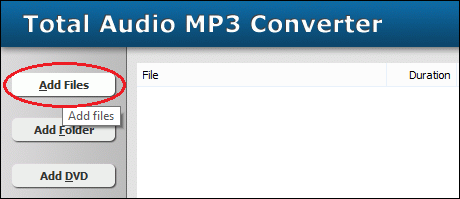 Click "Add Files" button to choose H261 files and add them to conversion list. 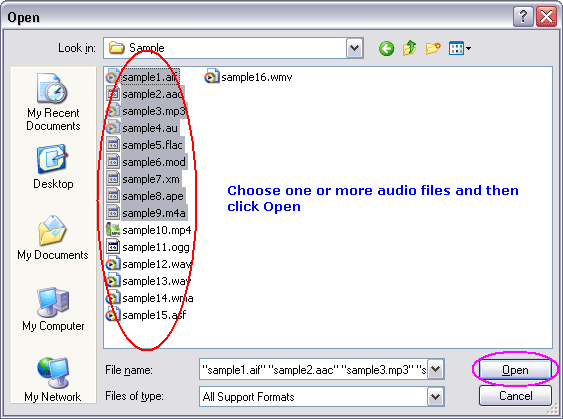 Choose one or more H261 files you want to convert and then click Open. 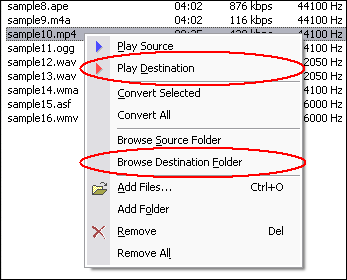 Right-click converted item and choose "Play Destination" to play the destination file, choose "Browse Destination Folder" to open Windows Explorer to browse the destination file. What is H261? The H.261 standard actually only specifies how to decode the video. Encoder designers were left free to design their own encoding algorithms, as long as their output was constrained properly to allow it to be decoded by any decoder made according to the standard. Encoders are also left free to perform any pre-processing they want to their input video, and decoders are allowed to perform any post-processing they want to their decoded video prior to display. One effective post-processing technique that became a key element of the best H.261-based systems is called deblocking filtering. This reduces the appearance of block-shaped artifacts caused by the block-based motion compensation and spatial transform parts of the design. Indeed, blocking artifacts are probably a familiar phenomenon to almost everyone who has watched digital video. Deblocking filtering has since become an integral part of the most recent standard, H.264 (although even when using H.264, additional post-processing is still allowed and can enhance visual quality if performed well). What is MP3? H261 to MP3 Related Topics: OGV to MP3, MVI to MP3, QCP to MP3, GXF to MP3, M2V to MP3, F4V to MP3, RMVB to MP3, PSX to MP3, H263 to MP3, M2TS to MP3, XA to MP3, M1A to MP3, 3GPP to MP3, DIF to MP3, RMI to MP3, SHN to MP3, H264 to MP3, MJ2 to MP3, QT to MP3, VFW to MP3, SMK to MP3, NSV to MP3, 4XM to MP3, SOL to MP3, MXF to MP3, ALAC to MP3, MLP to MP3, WMD to MP3, 3G2 to MP3, MPE to MP3, 3GP2 to MP3, W64 to MP3, NSA to MP3, NUT to MP3, RAM to MP3, M1V to MP3, DXA to MP3, RPL to MP3, FLV to MP3, F4A to MP3
|
| Home | Getting Started | Download | Buy Now! | Screen Shots | FAQ | Support | Contact | Links |
| Copyright © 2006-2017 Hoo Technologies All rights reserved. Privacy Policy |
